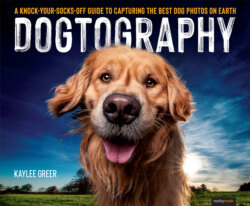Читать книгу Dogtography - Kaylee Greer - Страница 18
На сайте Литреса книга снята с продажи.
SPECIFIC DOG BODY LANGUAGE SITUATIONS
ОглавлениеWhen I dreamed up this particular chapter of the book, I thought, “Oh! I could show examples of bad body language and why it’s so crucial to know what it means!’ And then I smugly thought, “I’m sure I have no bad examples anywhere in my 800 bajillion-photo collection, because I’m a professional and of course I would never capture moments of discomfort in dogs!”
Well get down off your high horse, Greer. It was very humbling to see how many examples of bad dog body language I had lurking in the deep, dark corners of my Lightroom catalog. (This is where I would insert that wincing emoji face if I were sending this information in an embarrassing text to a friend.) I’ll start this section off by saying everyone makes mistakes, even me! But, knowing how to decipher between good and bad body language in dogs will make all the difference in the world in your work and the way viewers perceive your level of expertise. The one thing that I can say about these following photos is that they are images that would never show up in a client’s gallery or anywhere near my portfolio or social media accounts. Additionally, as a disclaimer, please be assured that as soon as I noticed this type of body language happening on-location, I never let it perpetuate past one or two frames. As soon as I caught wind of what the dog was trying to tell me, I immediately paused the sessions that you’ll see in these upcoming pages to fairly address the dogs’ levels of comfort. All that to say, please don’t call PETA on me. The truth is, these photos would never see the light of day if it wasn’t for this book, right here, where I’ve pulled them out of archived hard drive hell and printed them largely on this page for you to see in all their glory (and for me to cringe and live out here in the wild fields of embarrassment for a bit. Quite a humbling process this book-writing thing is, eh?). For the greater good of our learning purposes, and so that these mistakes are repeated as infrequently as possible by dog photographers the world over, let’s get into this madness!
Check this out, straight from the Dog Breath Photography first-hand challenges and experiences hard drive, a collection of dog body language cues that tend to signal discomfort or distress that you always want to look out for. Keep in mind, this is not an exhaustive list, but these are likely going to be the most common cues and behaviors that you’ll see in the context of a photo shoot. If you spot these behaviors pop up at your shoots, it is your responsibility to translate what your dog model is trying to tell you, and then work to correct the scenario before you indiscriminately continue shooting. Not only do these body language cues mean the dog is uncomfortable and his needs are not being addressed fairly in that moment, but this kind of visual discomfort in your subject reflects directly and poorly in the impact of the final imagery you’re working so hard to create.
